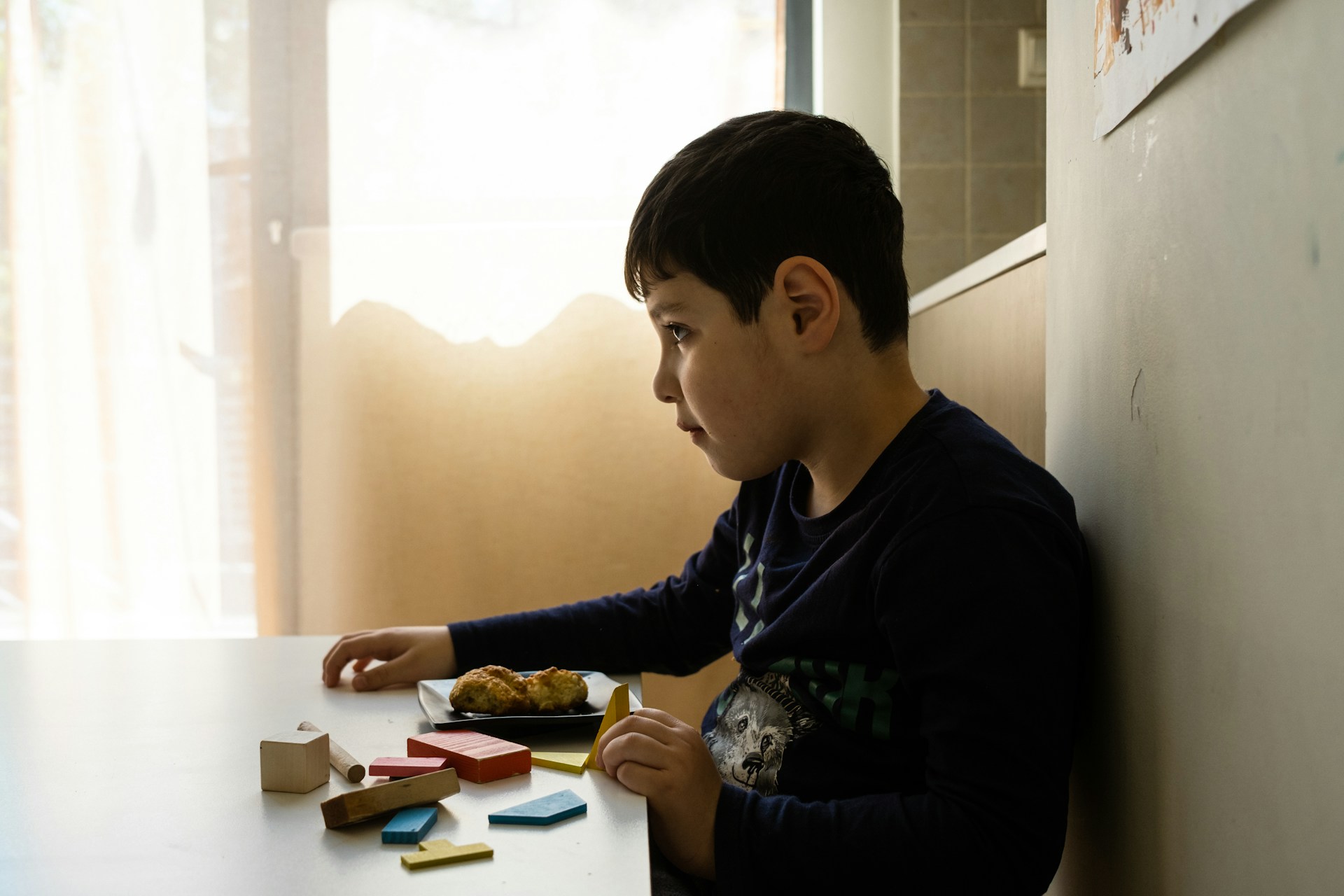Trying to get to bed on time with ADHD can feel like chasing something that never slows down. Your body might be tired, but your mind kicks into high gear the second your head hits the pillow. Plans, memories, random thoughts, or even just a series of distractions keep your brain spinning. You tell yourself to relax, but your brain refuses to shift gears. And before you know it, it’s well past bedtime again.
A good night’s sleep starts with what happens before you get into bed. But that’s where many people with ADHD get stuck. Routines might be hard to stick with, time might slip by without warning, and quieting the brain can feel impossible. Still, change is possible. Creating a better bedtime routine begins with small steps that actually work for how your brain operates.
The Importance Of A Consistent Bedtime Routine
People with ADHD often have trouble with transitions and structure. That doesn’t mean there’s no structure. It just means the brain doesn’t always respond to routine the way others might. This can make getting to bed consistently feel like climbing uphill. But a regular routine can create a sense of predictability that makes falling asleep much more doable.
Sleep and ADHD are deeply connected. Without enough rest, focus, patience, and memory can take a hit the next day. Then a tough day adds more pressure at night, which creates another restless sleep cycle. One difficult night turns into a string of wakeful ones, and the struggle continues.
Having a checklist or set pattern every night gives your brain clear signals. It tells your body when to start slowing down. Whether it’s brushing your teeth after dinner or dimming the lights at the same time each night, the goal is to make things feel automatic. The more you do it, the less your brain has to make decisions, and fewer choices can mean less mental clutter at bedtime.
Routines don’t have to be complex or take a lot of time. Even something small done the same way every night can help link your brain to rest. Think of it like training your brain to recognize that repeated steps mean sleep is coming soon. Even though it might feel slow at first, sticking with these steps can make a big difference over time. It’s about building habits that work with ADHD instead of against it.
Steps To Establish A Better Bedtime Routine
Starting a bedtime routine with ADHD might seem like a lot, but it gets easier when you break it into small, clear parts. The more predictable it becomes, the easier it is for your brain to follow. Here’s a basic list to build the foundation for better sleep:
1. Set a bedtime and stick with it
Pick a time that gives you enough sleep and try to shut down at that time every night. It’s okay if it doesn’t happen right away. Your brain just needs repetition to catch on.
2. Choose a few calming activities
You don’t need a long list. Pick two or three things that help you feel calm. That might be listening to quiet music, stretching, or reading something simple.
3. Avoid loud or active stimulation
Turn off the TV, phone, or computer at least an hour before bed. Bright screens and fast content keep your brain alert when it should be slowing down.
4. Adjust your bedroom for sleep
Turn on a fan or white noise if silence is too loud. Keep the room dark and cool. Make the space feel comfortable yet boring enough that your brain doesn’t want to stay awake.
5. Give yourself time
Don’t expect to go from full speed to asleep in 30 seconds. Building in a 30-minute unwind period helps ease the transition.
Think of this like a setup instead of a strict rule list. It’s more about helping your brain recognize what comes next, so it doesn’t have to guess. One example might be someone who begins their wind-down by dimming the lights around 9:30 PM, has a cup of caffeine-free tea, brushes their teeth, checks off a small list, and reads a chapter from a book they’ve already read. It’s not flashy. That’s the whole point. Simple choices, repeated day after day, give your brain a gentle road toward rest.
Tips For Maintaining The Routine
Creating a routine is one thing. Keeping it going when life gets busy is another. Especially for people with ADHD, sticking to new habits can feel frustrating. The key is planning ahead for the times when motivation drops, distractions pop up, or schedules get thrown off. It’s not about perfection. It’s about bouncing back.
Give your routine a little built-in flexibility. When your brain knows there’s some wiggle room, the stress drops. For example, maybe your bedtime is usually 10 PM, but if you’re running late, aim for 10:30 at the latest. Same steps, just shifted a bit. That way, you don’t fall completely out of the pattern.
Weekend routines deserve special attention. Many people want to catch up on sleep or socialize late, but big shifts in schedule can throw off the brain’s sleep rhythm. Try to keep the same sleep and wake times within about an hour, even on weekends. You’ll feel more rested and make Monday mornings less rough.
Sometimes life interrupts even the best plans. Maybe you had to travel, or you had a stressful day that pushed your schedule way off. Don’t let one off-night turn into a lost week. Just return to your bedtime routine the next day, starting fresh. If your current routine stops working altogether, tweak it. Make it better fit your daily life.
Here are a few ideas to stay on track:
– Use reminders on your phone or sticky notes where you’ll see them
– Keep a small wind-down checklist by your bed
– Set a calming alarm or chime 30 minutes before bedtime
– Track your sleep on paper or in an app to see what works and what doesn’t
– Keep the wind-down routine fun to help make it stick. Add soft music or a favorite scent
The best routines are the ones you’ll actually do. Make your bedtime plan simple, predictable, and personal to you.
How ADHD Treatment Can Help Improve Sleep
Even with solid habits, some people still find it really hard to settle down at night. That’s when it might be time to take a closer look at the bigger picture. ADHD can affect sleep in many ways. It can make it harder to shift focus, relax the body, or calm the constant stream of thoughts. Trying to manage that all alone can feel overwhelming.
Working with a professional who understands ADHD helps connect the dots between daytime challenges and nighttime struggles. Sometimes underlying anxiety, emotional stress, or daily overwhelm adds extra pressure that blocks progress. Finding those patterns and learning how to handle them during the day can lift a huge weight when bedtime rolls around.
Treatment brings support you might not get from a checklist. Whether it’s creating realistic goals, catching thought traps that keep you awake, or building better transitions between activities, professional help can guide steady changes.
One person, for example, might notice that their racing thoughts always start right after checking social media before bed. Talking through that with a therapist could lead to better evening habits and a new way to unwind like journaling or using a calming app. These small adjustments, with ongoing support, can clear the path to better rest.
Getting good sleep isn’t about fixing everything in one night. It’s about learning how your mind works, figuring out what slows it down, and knowing when to ask for help. If sleep still feels out of reach, there’s no need to figure it out alone.
Make Nights Less Stressful, One Step At A Time
Sleep is personal. What helps one person doze off might not work for someone else, especially if ADHD is part of the picture. But one thing is certain. Bedtime doesn’t have to be chaotic. Creating a nighttime rhythm that fits your brain, your needs, and your lifestyle doesn’t just help you fall asleep easier. It helps bring calm and confidence back into your evenings.
Start with small changes, stay patient, and be kind to yourself along the way. Your bedtime doesn’t need to be perfect. It just needs to be steady enough to give your mind a chance to rest. Over time, even subtle updates can have a big impact on how you feel the next day.
Struggling with ADHD sleep issues can disrupt your daily routine and leave you feeling drained. If sticking to a bedtime routine feels harder than it should, our approach to ADHD sleep problems treatment can help you build lasting habits that support better rest. Dr. Shahin Carrigan Ph.D., MFT is here to guide you toward calmer nights and more focused days.




